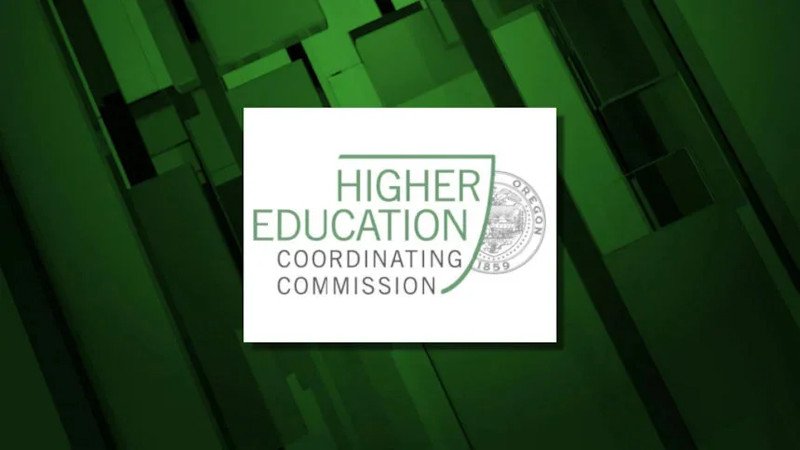State OKs common numbering for 10 community college, university courses to smooth transfers

SALEM, Ore. (KTVZ) – Oregon's Higher Education Coordinating Commission has announced the approval at its Feb. 9 public meeting of the first 10 commonly numbered courses at the state’s public postsecondary institutions, a change intended to help students receive credit for these undergraduate courses when they transfer between institutions.
This statewide alignment, directed by 2021 legislation, is designed to help students avoid having to retake courses when they transfer from a community college to a university, and ultimately to save students time and money by ensuring this group of highly enrolled courses have the same number of credits and learning outcomes.
With this approval, all Oregon community colleges and public universities are required to accept a transfer of academic credit for each course as if the credit was earned identically at the accepting institution, starting in the 2023-24 academic year. The Commission expects to consider up to 39 additional courses for alignment over the course of the next three years.
Donna Lewelling, director of the HECC Office of Community Colleges and Workforce Development said, “This is great news for the thousands of students who transfer from two to four-year institutions every year, to help students to plan for transferable courses, and ensure that credits for congruent coursework are honored. This is part of our work to expand equitable pathways to success for all Oregon’s diverse students who cannot afford to lose credits as they progress toward a degree or credential.”
According to the Education Commission of the States, Oregon joins 30 other states that have adopted CCN as a way of creating “clear and accessible transfer pathways.”
Common Course Numbering is one of numerous strategies Oregon and other states are taking to address the serious concern of credit loss for the average student transferring from a community college to a university.
In 2021, Senate Bill 233 created the Oregon Transfer Council and charged it with the creation of a Common Course Numbering (CCN) system for introductory and other lower division courses with similar learning outcomes.
Efforts to streamline transfer in Oregon—including legislative efforts to establish a Common Course Numbering System—can be traced back decades; while progress has been made, a fully aligned set of courses has not been implemented until now.
The first 10 courses are from a list of 80 courses identified by the Transfer Council in November 2021, reflecting the most frequently transferred courses into public universities from Oregon community colleges.
Veronica Dujon, director of the HECC Office of Academic Policy and Authorization, recognized the extensive work of the Transfer Council and its subcommittees whose collaboration led to this first set of courses. She said, “Aligning lower-division course learning outcomes and credits across institutions is a substantial commitment by faculty and institutions to do what is in students’ best interest.”
The commonly numbered courses approved by the Commission for academic year 2023-24 are detailed in a summary here. These approved courses have aligned course titles, descriptions, subject codes, numbers, credits, and learning outcomes.
- COM 100Z Introduction to Communication
- COM 111Z Public Speaking
- COM 218Z Interpersonal Communication
- MTH 105Z Math in Society
- MTH 111Z Precalculus I: Functions
- MTH 112Z Precalculus II: Trigonometry
- STAT 243Z Elementary Statistics I
- WR 121Z Composition I
- WR 122Z Composition II
- WR 227Z Technical Writing
New students at the community colleges who are enrolled primarily in lower-division collegiate coursework are more often from underserved racial/ethnic communities, first-generation backgrounds, rural counties, and low-income backgrounds than new freshmen at the public universities. CCN is intended to smooth the pathway to enable them to transfer.
HECC research has shown that transfer students from Oregon community colleges already comprise a substantial portion of resident undergraduate students on Oregon public university campuses — approximately one out of every three Oregon public university students.
Moreover, transfer students consistently graduate with more accumulated excess credits, their time-to-degree is longer, and their graduation rates are lower compared to that of their first-time freshmen counterparts. Even when credits transfer, students are sometimes told their credits can transfer as electives, but not count toward a degree major, which means a loss of time and money as students are left repeating courses in order to graduate. CCN is intended to mitigate these challenges.
In April 2022, 80 faculty and staff from 20 public community colleges and universities began meeting regularly to align 10 courses. Five subcommittees (Communications, Math, Statistics, Writing, and Systems and Operations) deliberated for over 100 hours to align course content, using research from regional and national organizations and information from all 24 public institutions of higher education to reach consensus on alignment.
Information on the reports and findings submitted to the Transfer Council (November 2022), names of subcommittee members and institutional affiliation, the CCN course list, and much more can be found on the HECCs Resources for Common Course Numbering webpage.